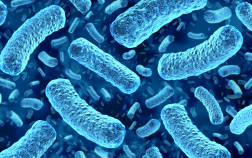Case Studies
Search >>
With the release of the Make America Healthy Again (MAHA) report, the food and supplement industries are facing a pivotal moment. Join two of our leading experts as they unpack the report’s findings and explore what they could mean for consumer-packaged goods (CPG) companies. From reformulation strategies to enhanced ingredient scrutiny, this session will help industry professionals prepare for a wave of potential changes. Originally Recorded on August 21, 2025
In May, the Trump Administration released the Make Our Children Healthy Again report—commonly referred to as the MAHA Report. As a new conversation unfolds, let Eurofins help you dive into its implications for the food industry through a series of weekly posts. While the report spans a broad range of topics, our lens will remain focused on the food, beverage, and consumer goods sectors—where we continue to support companies navigating change and driving innovation. Keep reading to find out more on MAHA Report.
The demand for speed in food production and distribution continues to increase, driven by consumer expectations for freshness, short product shelf lives, and regulatory compliance requirements. In this environment, rapid pathogen detection methods have become essential tools for timely decision-making and effective food safety management. This webinar will provide a technical overview of commercially available rapid methods for detecting key foodborne pathogens, including Salmonella, Listeria spp., and L. monocytogenes. Originally Recorded on August 20, 2025.
In this webinar, we cover our approach to custom method development with a focus on chromatographic techniques, such as GC-FID, GC-MS(MS), HPLC, UPLC, and HPLC-MS(MS). From the initial steps of deciding on an approach, to actual lab development and method validation for routine or regulatory use will be explained using actual case studies and examples. Originally Recorded on August 12, 2025
Issues during the Clean-In-Place (CIP) process, such as insufficient rinsing, can lead to the contamination of products, resulting in quality and/or safety concerns. This on-demand webinar covers various strategies for the detection of CIP chemicals in foods, beverages, and related products. Originally Recorded on June 25, 2025
Creating shelf-stable nutritional bars and other natural food products is about understanding the science behind food preservation, taste and appearance. One of the most critical factors in the formulation of long-lasting, safe and appealing products is water activity. Water activity plays a major role in maintaining texture, reducing the rate of fats oxidation preventing spoilage and ensuring safety from microbial growth. Keep reading to learn what is being done to create a longer shelf life.
In today’s competitive marketplace, success hinges on more than just product formulation. You must create a product experience that consistently delights consumers. Continue reading to learn how Eurofins Nutrition Analysis Center can help you understand how your product is perceived in the real world.
As the global appetite for high-protein and plant-based protein products continues to grow, food developers face a critical challenge: choosing the right protein ingredients that meet nutritional needs and perform well in real-world applications. Protein functionality testing is the backbone of successful innovation in this evolving space. Read more about protein testing by clicking the link.
Chlorates and perchlorates are chlorine-based oxyanions that have emerged as contaminants of concern in the food and dietary supplement industries. These compounds are highly soluble in water and persistent in the environment, making them difficult to eliminate once introduced into the supply chain. Continue reading to learn what you can do to test for these contaminants.
Low water activity foods (LWAFs) have historically been considered low-risk for microbiological hazards because their limited “free” (unbound) water in the formulation prevents bacterial growth. However, foodborne illness outbreaks revealed that pathogens can survive for extended periods in LWAFs, even in the absence of growth. Watch now to learn what is required to validate control measures to reduce microbial risks in LWAFs. Originally Aired on June 18, 2025.
















